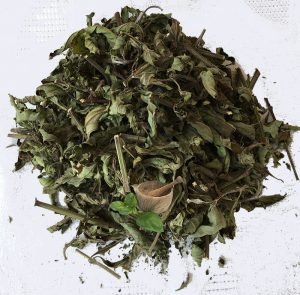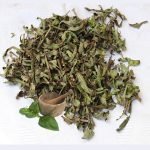How to Brew the Perfect Cup of Jamaican Herbal Tea
Herbal tea holds a cherished place in Jamaican culture, known not only for its soothing properties but also for its health benefits. This guide will walk you through the process of brewing the perfect cup of Jamaican herbal tea, from selecting the right herbs to mastering the brewing techniques. Whether you're a seasoned tea enthusiast or a curious newcomer, you'll find valuable tips and delicious recipes to enjoy the rich flavors and wellness benefits of Jamaican herbal tea.
Understanding Jamaican Herbal Tea
Jamaican herbal tea is a blend of various herbs known for their medicinal properties and unique flavors. Some of the most commonly used herbs include:
Lemongrass: Known for its citrusy flavor and digestive benefits.
Ginger: A popular choice for its spicy kick and anti-inflammatory properties.
Peppermint: Refreshing and soothing, great for digestion and respiratory health.
Soursop Leaves: Believed to have calming effects and potential anti-cancer properties.
These herbs are often dried and can be found here at Island Herbs and Spices. Look for organic and sustainably sourced options to ensure the best quality.
Preparing for Brewing
Before you start brewing, gather the necessary equipment:
Tea Kettle: For boiling water
Strainer or Tea Infuser: To hold the dried herbs
Teapot or Mug: For steeping and serving
Choose high-quality water, such as filtered or spring water, to enhance the flavor of your tea. Measure your herbs carefully, typically using one teaspoon of dried herbs per cup of water.
Brewing Techniques
Follow these steps to brew the perfect cup of Jamaican herbal tea:
Boil Water: Bring water to a boil, then let it cool slightly to avoid burning the herbs (about 200°F or 93°C).
Add Herbs: Place the dried herbs in a strainer or tea infuser.
Steep: Pour the hot water over the herbs and let steep for 5-10 minutes, depending on your taste preference.
Enhance Flavor: Add honey, lemon, or spices like cinnamon for extra flavor.
Recipes for Jamaican Herbal Tea Blends
Basic Jamaican Herbal Tea Recipe
1 teaspoon of dried lemongrass
1 teaspoon of dried ginger
1 cup of hot water
Steep for 7-10 minutes, strain, and enjoy.
Recipe 1: Lemongrass and Ginger Tea
1 teaspoon of dried lemongrass
1 teaspoon of dried ginger
1 cup of hot water
Steep for 7-10 minutes, add honey and lemon if desired, strain, and enjoy.
Recipe 2: Mint and Soursop Leaves Tea
1 teaspoon of dried Mint
1 teaspoon of dried soursop leaves
1 cup of hot water
Steep for 5-7 minutes, strain, and enjoy.
Recipe 3: Turmeric and Ginger Tea
1 teaspoon of dried turmeric
1 teaspoon of dried ginger
1 cup of hot water
Steep for 7-10 minutes, add honey and black pepper if desired, strain, and enjoy.
Tips for the Perfect Brew
Dos and Don'ts: Do use fresh, high-quality herbs. Don't over-steep the tea, as it can become bitter.
Adjusting Strength and Flavor: Experiment with the amount of herbs and steeping time to find your perfect brew.
Storing Dried Herbs: Keep herbs in an airtight container in a cool, dark place to maintain their potency.
Conclusion
Brewing Jamaican herbal tea is an art that combines the right herbs, techniques, and personal touches. Experiment with different blends and recipes to discover your favorite flavors. Share your experiences and recipes with others to spread the joy of this delightful and healthful beverage.
Read More
Categories:
Jamaican Herbs






